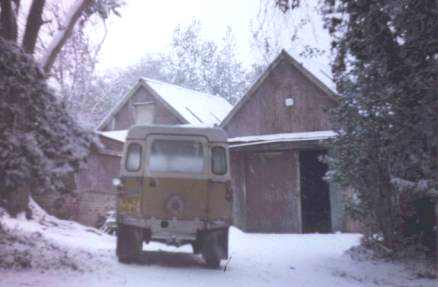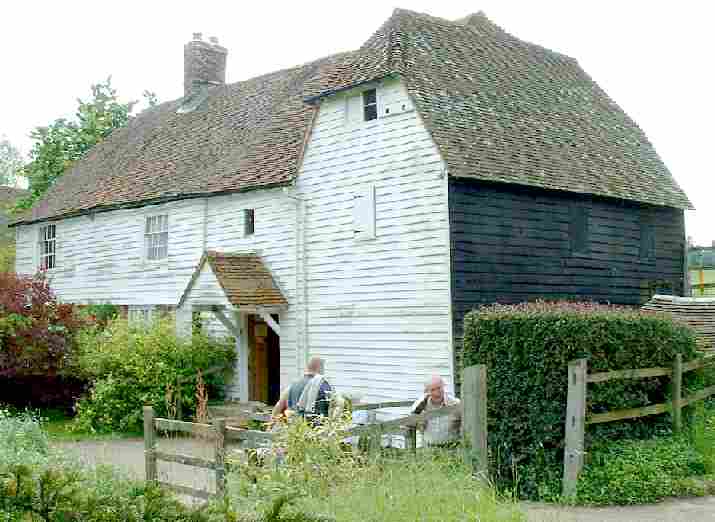|
|
|||||||||||||||
|
HOME | BIOLOGY | FILMS | GEOGRAPHY | HISTORY | INDEX | INVESTORS | MUSIC | SOLAR BOATS | SPORT |
|||||||||||||||
|
The National Trust for Places of Historic Interest or Natural Beauty, usually known as The National Trust, is a conservation organisation in England, Wales and Northern Ireland. The Trust does not operate in Scotland, where there is an independent National Trust for Scotland.
According to its website:
News Places to visit Things to do About the National Trust Environment & conservation Helping us
The
National Trust was founded in 1895 by three Victorian
philanthropists - Miss Octavia Hill, Sir Robert Hunter and Canon
Hardwicke Rawnsley. Concerned about the impact of uncontrolled
development and industrialisation, they set up the Trust to act
as a guardian for the nation in the acquisition and protection
of threatened coastline, countryside and buildings.
Herstmonceux Generating Works - Circa 1900 - 1st public supply
Many historic properties, such as The Old Steam House at Herstmonceux (shown above) are in private ownership. English Heritage urges local authorities to assist conservation of private historic buildings by giving them viable alternative uses, rather than seeing them empty and fall into disrepair. The story of the Steam House is an example of how persistence can pay when battling for recognition. Since 1982, only one man prevented this rare example of a generating works from collapse. The local authority concerned did not have the in house expertise to recognise the find. 17 years later English Heritage rallied to the cause and put the building on a Monument Protection Programme. The occupier was vindicated, after being called a crank for 22 years, and only now is the fate of the building being reconsidered. The only other early generating building in East Sussex is Rudyard Kipling's Batemans Mill, shown below.
The Trust is a registered charity and completely independent of Government, therefore relying heavily on the generosity of subscribing members (now numbering over 3 million) and other supporters. Find out more facts and figures about the National Trust.
Nelson Kruschandl - I struggled for recognition for 22years
History
The National Trust for Places of Historic Interest or Natural Beauty was formed in 1895 and is a registered charity, no. 205846, under the 1993 Charities Act. It is incorporated, and has powers conferred upon it, by the various National Trust Acts from 1907 to 1971. Its original registration in 1895 was vested with the stated power to, 'promote the permanent preservation for the benefit of the Nation of lands and tenements (including buildings) of beauty or historic interest'. The Trust was founded on January 12, 1895 by Octavia Hill (18381912), Robert Hunter (18441913) and Canon Hardwicke Rawnsley (18511920), prompted in part by the earlier success of Charles Eliot and the Kyrle Society. A fourth individual, the Duke of Westminster (18251899), is also referred to in many texts as being a principal contributor to the formation of the Trust.
In the early days the Trust was concerned primarily with protecting open spaces and a variety of threatened buildings; its first property was Alfriston Clergy House and its first nature reserve was Wicken Fen. The focus on country houses and gardens which now comprise the majority of its most visited properties came about in the mid 20th century when it was realised that the private owners of many of these properties were no longer able to afford to maintain them. The diarist James Lees-Milne is usually credited with playing a central role in the main phase of the Trust's country house acquisition programme, though he was in fact simply an employee of the Trust, and was carrying through policies which had already been decided by its governing body.
One of the biggest crises in the Trust's history erupted at the 1967 Annual general meeting, when the leadership of the Trust was accused of being out of touch and placing too much emphasis on conserving country houses. In response, the Council asked Sir Henry Benson to chair an Advisory Committee to review the structure of the trust. Following the publication of the Benson Report in 1968 much of the administration of the Trust was devolved to the regions. Membership was 226,200 when the Trust celebrated its 75th anniversary in 1970. By 1975 it was 500,000; the one million mark was reached in 1981 and two million in 1990.
In 1990s a dispute over whether stag hunting should be permitted on National Trust land caused bitter disputes within the organisation, but it did little to slow down the growth in member numbers. In 2005 the number of members reached 3.4 million. That year, the Trust moved to a new head office in Swindon, Wiltshire. The building was constructed on an abandoned railway yard, and is intended as a model of brownfield renewal. It is named Heelis, for the writer Beatrix Potter, who was one of the National Trust's most important benefactors and whose married name was Mrs Heelis. [1] Governance and funding
The Trust is constituted by the National Trust Acts 19071971, but it is a private charity rather than a government institution (English Heritage and its equivalents in other parts of the United Kingdom are government bodies which perform some functions which overlap with the work of the National Trust). The Acts grant the Trust the unique statutory right to declare land inalienablewhich prevents the land from being sold or mortgaged against the Trust's wishes without parliamentary intervention.
The Trust is one of the largest membership organisations in the world, with over three million members, whose annual subscriptions are its most important source of income. There is a separate organisation called the Royal Oak Foundation for American supporters. The members elect the council of the National Trust, and may propose and vote on motions at the annual general meeting. The National Trust was slow to enter the Internet era, and purchasing anything (including basic membership) from its website remains problematic.
At an operational level the Trust is organised into regions which are aligned with the official local government regions. Its headquarters are in Swindon.
For the year ended 28 February 2005, the Trust's total income was £315 million, or £253.1 million excluding the costs of its "Enterprises" division. The largest sources of this £253.1 million were: membership subscriptions 36%; legacies 20%; rents 10%; other investment income 10%. Expenses included £91.4 million for routine property maintenance costs and £61.4 million for capital projects.
The Trust's investment fund was over £715 million, not counting the substantial value of the farms and properties on its country estates (which is many cases is purely notional, since these are held inalienably, and could not be realised even if the Trust wanted to). Most of this is in tied funds which support specific properties and projects. What the National Trust ownsHistoric houses and gardens
The Trust owns thousands of properties throughout England, Wales and Northern Ireland; including over 200 mansion houses and gardens of outstanding interest and importance. The majority of these country houses contain collections of pictures, furniture, books, metalwork, ceramics and textiles that have remained in their historic context. Most of the houses have also important gardens attached to them, and the Trust also owns some important gardens which are not attached to a house. The properties include some of the most famous stately homes in the country and some of the key gardens in the history of British gardening.
The government of the United Kingdom has imposed inheritance taxes which often render intergenerational transfers of large estates impossible. This has proved a strong incentive for families to bequeath great houses to the Trust. Coast and countryside
The Trust's land holdings account for more than 623,000 acres of beautiful countryside (over 950 miles²), covering nearly one and a half percent of the total land mass of England, Wales and Northern Ireland. A large proportion of this consists of the parks and agricultural estates attached to country houses, but there are also many countryside properties which were acquired specifically for their scenic or scientific value. The Trust owns or has covenant over about a quarter of the Lake District; it has similar control over about 12% of the Peak District National Park (See for example South Peak Estate, High Peak Estate). It owns or protects roughly one fifth of the coast in England, Wales and Northern Ireland (704 miles / 1,126 km), and has a long-term campaign, Project Neptune, which seeks to acquire more. Other properties
In recent years the Trust has sought to broaden its activities and appeal by acquiring properties such as former mills (early factories), workhouses and Paul McCartney's and John Lennon's childhood homes. Other activities
The Trust makes a substantial part of its income from commercial activities, including gift shops, restaurants, publishing, package holidays and holiday cottage lettings. It also runs working holidays for volunteers. But most of its revenues continue to derive directly from members' subscriptions, and from bequests from well-wishers. Most visited properties
The 200405 annual report contains a list of all National Trust properties for which an admission charge is made that attracted more than 50,000 visitors in the year. The top ten were:
External links
Batemans water mill - surviving private electricity supply
Historic properties & collections Hiring a venue Holidays & travel
Learning & discovery Local to you Membership Policy & campaigns
Shopping Links Site map The trust website explained
|
|||||||||||||||
|
This
website
is Copyright © 1999 & 2006 NJK. The bird |
|||||||||||||||
|
AUTOMOTIVE | BLUEBIRD | ELECTRIC CARS | ELECTRIC CYCLES | SOLAR CARS |
|||||||||||||||
 THE NATIONAL TRUST
THE NATIONAL TRUST


